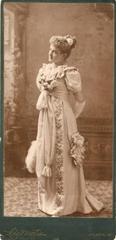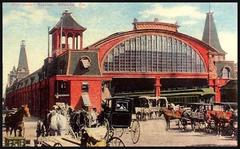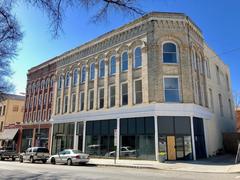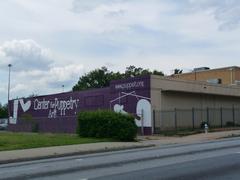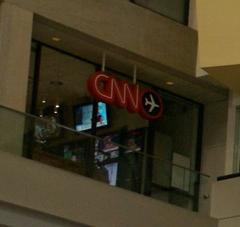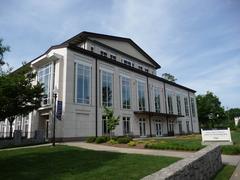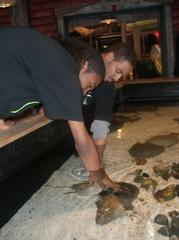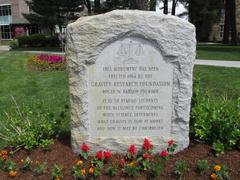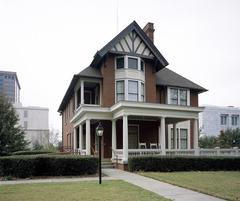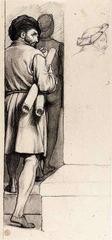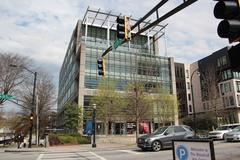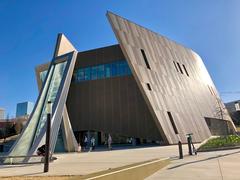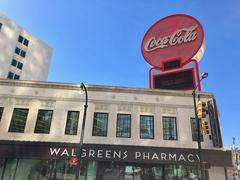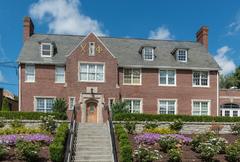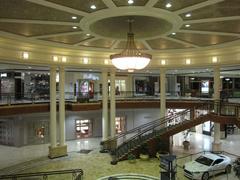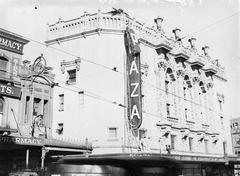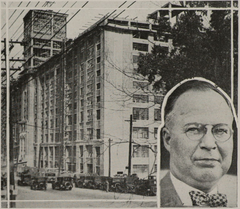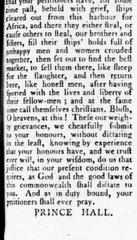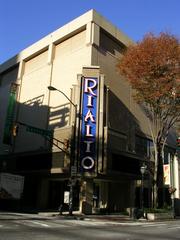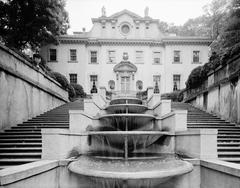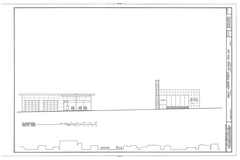Visiting the B. Mifflin Hood Brick Company Building: Atlanta Historical Site Guide
Date: 04/07/2025
Introduction
The B. Mifflin Hood Brick Company Building is one of Atlanta’s most enduring industrial landmarks, encapsulating the city’s evolution from a manufacturing hub to a center for creativity and adaptive reuse. Founded in 1908 by Benjamin Mifflin Hood—a pioneering brickmaker from Pennsylvania—the company produced high-quality, fire-resistant bricks that helped shape Atlanta’s urban fabric. The building itself, constructed in 1909 and expanded in 1921, stands in the Virginia–Highland neighborhood and is a prominent example of early 20th-century industrial architecture (Atlanta Preservation Center; National Register of Historic Places).
Beyond its architectural merit, the site symbolizes progressive labor values—it famously marketed its products as “non-convict brick,” refusing to use convict labor at a time when such practices were common in Georgia (Brickworks Art Gallery). Today, the building houses the Brickworks Gallery, artist studios, and private residences, offering both a window into Atlanta’s industrial past and a vibrant venue for contemporary arts and cultural events (theclio.com; Atlanta Design Festival).
This guide provides everything you need to plan your visit, including historical context, visitor information, accessibility, nearby attractions, and tips to make your experience memorable.
Table of Contents
- History and Founding of the B. Mifflin Hood Brick Company
- Architectural Features and Evolution
- The Building’s Role in Atlanta’s Urban Development
- Economic and Social Impact
- Decline, Preservation, and Adaptive Reuse
- Current Use: Gallery, Residences, and Studios
- Visiting Information
- Practical Tips for Visitors
- Frequently Asked Questions (FAQ)
- Visuals and Media
- Additional Resources
- Conclusion and Call to Action
History and Founding of the B. Mifflin Hood Brick Company
Established in 1908, the B. Mifflin Hood Brick Company responded to Atlanta’s growing demand for durable construction materials during the city’s post-Civil War boom. The company’s headquarters and showroom were completed in 1909, with a significant expansion in 1921 to accommodate increased production and showroom needs (Atlanta Preservation Center; National Register of Historic Places).
Architectural Features and Evolution
Original Construction and Expansion
The building is a one-story, 11-bay masonry structure that exemplifies early industrial design. The 1921 expansion tripled its size while maintaining architectural cohesion. The brick façade—comprised of the company’s own products—features decorative cornices, large arched metal windows, and a parapet panel inscribed “B. Mifflin Hood Brick Co.” The sloped site creates a dynamic profile, with the original section lower than the addition (theclio.com).
Interior Design
Inside, the building showcases exposed brick walls, timber framing, and original tilework. Expansive multi-pane windows provide ample natural light, reflecting both aesthetic and functional priorities of the era. These features are carefully preserved and highlighted in the building’s current use as a gallery and creative hub.
The Building’s Role in Atlanta’s Urban Development
The Hood Company was instrumental in supplying bricks for Atlanta’s schools, churches, and commercial buildings, influencing the city’s architectural landscape. The headquarters served as a business nerve center, providing office space, showrooms, and shipping docks that facilitated regional distribution (Atlanta History Center).
Economic and Social Impact
As a major Reynoldstown employer, the company fostered local economic growth and community engagement, providing stable jobs and supporting neighborhood vitality (Historic Atlanta). Its stance against convict labor set a progressive industry standard, distinguishing its reputation and ethical legacy.
Decline, Preservation, and Adaptive Reuse
The rise of alternative building materials led to the company’s closure in the late 20th century. The building stood vacant until community-driven preservation efforts in the early 2000s restored it for mixed use, including the Brickworks Gallery, studios, and private residences (Curbed Atlanta; Brickworks Art Gallery). This sensitive rehabilitation preserved original details while adapting the structure for modern needs.
Current Use: Gallery, Residences, and Studios
Brickworks Gallery
Since 2016, the Brickworks Gallery has been the building’s cultural anchor, presenting contemporary art exhibitions and hosting community events (Brickworks Art Gallery). Notable exhibitions have featured Atlanta-based artists and themes exploring local history. The gallery’s industrial-chic interior, with exposed brick and large windows, provides an ideal backdrop for art and gatherings.
Private Residences and Studios
A rear addition, renovated in the 1930s and later by BLDG’s architecture firm, contains private residences and artist studios. These spaces blend modern amenities with preserved historic character, such as original windows and brick cornices (dwell.com).
Preservation Status
The building was added to the National Register of Historic Places in 2018, ensuring all modifications adhere to preservation standards and highlighting its regional significance (Georgia State Historic Preservation Organization).
Visiting Information
Hours, Tickets, and Accessibility
- Address: 686 Greenwood Avenue NE, Atlanta, GA 30306
- Gallery Hours: Typically open Tuesday–Saturday, 11:00 AM–6:00 PM, and Sunday, 12:00 PM–5:00 PM; closed Mondays and major holidays. Hours may vary—call 912-596-3147 or check the gallery website for updates.
- Admission: Free for all visitors.
- Guided Tours: Offered during special events (such as the Atlanta Design Festival) or by appointment.
- Accessibility: The building features ramp access and accessible restrooms.
- Parking: Street parking available nearby; additional lots within walking distance.
- Public Transit: Served by MARTA bus routes; adjacent to the Atlanta BeltLine Eastside Trail for pedestrian and cycling access (Atlanta BeltLine).
Travel Tips
- Wear comfortable shoes for walking and exploring the neighborhood.
- Bring a camera—photography is permitted for personal use.
- Call ahead before visiting to confirm current hours and event schedules.
Nearby Attractions
- Atlanta BeltLine: Popular urban trail for walking, biking, and public art.
- Ponce City Market: Food, retail, and rooftop attractions in a historic building (Ponce City Market).
- Virginia–Highland District: Shopping, dining, and historic homes.
- Martin Luther King Jr. National Historical Park: Significant civil rights heritage site.
- High Museum of Art: Renowned art museum with diverse collections.
Events and Tours
Check the Atlanta Design Festival and Brickworks Gallery for details on upcoming tours, exhibitions, and community programs.
Practical Tips for Visitors
- Best Times: Spring and fall offer pleasant weather and coincide with many neighborhood events.
- Amenities: No café or gift shop on site; numerous dining options nearby.
- Etiquette: Respect private residences and posted signs; supervise children due to historic flooring and features.
- Accessibility: While most public areas are accessible, contact organizers for specific accommodations.
Frequently Asked Questions (FAQ)
Q: Is there an admission fee?
A: No, admission to the Brickworks Gallery is free.
Q: What are the visiting hours?
A: Hours vary; generally open Tuesday–Saturday (11–6), Sunday (12–5). Call ahead or check the website.
Q: Are guided tours available?
A: Yes, during special events and by appointment. Check with the gallery or Atlanta Design Festival for details.
Q: Is the building wheelchair accessible?
A: Yes, including a ramp entrance and accessible restrooms.
Q: Can I visit the private residences or studios?
A: No, private areas are not open to the public except during occasional special events.
Q: May I take photographs inside?
A: Yes, for personal use; commercial shoots require prior approval.
Visuals and Media
- Historic and current photos of the exterior and interior (with descriptive alt text for accessibility).
- Virtual tours and event galleries available on the Brickworks Gallery website.
Additional Resources
- Atlanta Preservation Center
- National Register of Historic Places
- Brickworks Art Gallery
- The Clio
- Dwell
- Georgia State Historic Preservation Organization
- Atlanta Design Festival
- Virginia-Highland Civic Association
- Atlanta BeltLine
- Ponce City Market
Conclusion and Call to Action
The B. Mifflin Hood Brick Company Building is a living testament to Atlanta’s commitment to preserving its industrial and architectural legacy while fostering creativity and community engagement. Its journey from a brick factory to a thriving arts venue exemplifies thoughtful adaptive reuse and the power of heritage to inspire new generations.
To make the most of your visit, consult official resources for current hours and event listings, and consider downloading the Audiala app for exclusive guided tours and historical insights. Stay connected with the Brickworks Gallery and Atlanta cultural organizations on social media for the latest news and event announcements.
Experience Atlanta’s past and present at the B. Mifflin Hood Brick Company Building—where history, art, and community converge.

